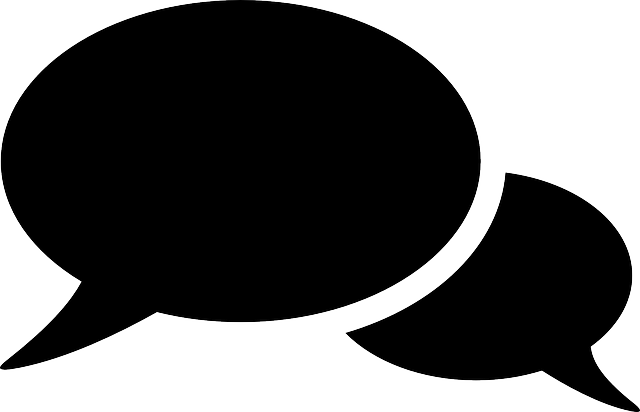As a writer, tone plays a crucial role in how your message is conveyed to your readers. How you use language to express your ideas can impact the emotions and attitudes of your audience.
This is why mastering the art of tone in writing is essential for effective communication.
In this article, we will explore the different types of writing tones and provide tips for mastering them.
Introduction to Tone in Writing
Often, tone refers to the writer’s attitude toward the subject matter. Essentially, the writer chooses a creative writing style that helps keep the reader intrigued – evoking more emotion by choosing the perfect tone to match the writer’s objective.
Tone is often revealed through the specific choice of words, phrasing, and the writer’s intention.
Common ones include:
- Positive tone
- Negative tone
- Neutral tone
- Matter of fact tone
- Formal and Informal tone
- Serious tone
- Humorous tone
The writer’s tone can significantly impact how the reader perceives the writing. In literary terms, tone typically refers to the mood implied by an author’s word choice and the way that the text can make a reader feel.
Other different tones are:
- Academic
- Conversational
- Persuasive
- Sarcastic
- Empathetic
- Authoritative
Why is Tone in Writing Important?
Different tones dictate how the reader interprets the message and can influence the reader’s emotions and attitudes toward the subject matter.
For example, a persuasive tone might help the writer convince the reader of a specific argument, making the discussion more compelling and convincing. In contrast, a sarcastic tone could undermine your credibility and cause your readers to lose faith in you.
The tone in writing can help convey the writer’s personality and style. A humorous tone can make the content more engaging and entertaining, while an academic tone can make it more authoritative and informative.
Different Types of Writing Tones
There are several different types of writing tones – each with its own purpose and characteristics.
Formal Writing Tone
Academic writing typically demands a formal writing tone used for professional and legal documents, academic essays, and dissertations.
It’s characterized by the use of
- Complex sentence structure
- Technical and subject-specific terminologies
- Full words rather than contractions
A formal tone will convey professionalism and authority where the writer emphasizes facts over opinions.
Informal Tone
Informal tones are used in everyday communication, characterized by the use of colloquialisms, contractions, and slang. An informal style creates a more relaxed and conversational atmosphere but could also employ humor or sarcasm to entertain the reader.
Conversational style is one of the literary devices most used in blog writing, where a friendly tone is most appropriate. The sentence structure is often short and snappy, although people often use extended, unstructured, and meandering passages in pieces employing an informal tone.
For example, an informal tone might be used in an email to a friend, while a professional email would most likely require a more formal writing tone to convey professionalism.
Academic Tone
The academic tone in writing is similar to the formal tone but is characterized by the use of complex sentence structures, technical terms, and a neutral, objective voice. The purpose of an academic tone is to convey expertise and credibility.
For example, you might use an academic tone in a research paper or a thesis. The writer would avoid using personal pronouns and a formal, objective voice.
Conversational Tone in writing
A conversational writing tone is similar to the informal approach, characterized by the use of contractions, an informal voice, and a friendly, cooperative tone.
The purpose of a conversational tone is to create a personal connection with the audience. Typically, we speak conversationally, so this writing style aims to replicate the word choice, tone, and approachability we’d use when discussing an issue with a friend or colleague, fostering mutual participation.
For example, you might employ a conversational writing style in a speech or a podcast. In this case, the writer would use words that are easy to understand with a friendly, engaging inflection.
Persuasive Tone
A persuasive tone is used when aiming to persuade or convince the reader, characterized by the use of purposeful words, emotional appeals, and persuasive techniques. The purpose of a persuasive tone is to persuade the reader to take action or adopt a particular point of view.
A persuasive tone might feel confident or present a self-assured attitude. This assertive tone is employed to appeal to the reader’s sense of trust, playing on their feelings and using phrases chosen to elicit an emotional response.
For example, you might use a persuasive tone in an advertisement or a political speech. The writer uses words specifically chosen to play on the audience’s feelings, using persuasive techniques such as rhetorical questions, stark contrast, or purposeful repetition to change people’s attitude, opinion, or belief systems.
Humorous Tone
A humorous tone intends to be funny or entertaining, represented by the use of jokes, puns, and sarcasm. The purpose of a humorous tone is to create a light-hearted and fun atmosphere or an attitude of bonhomie.
For example, you might use a humorous tone in a comedy sketch or a satirical article. The writer uses words, phrases, and situational examples designed to make the reader smile or laugh.
Sarcastic Tone
A sarcastic tone in writing intends to express an ironic or mocking attitude. The use of irony and humor characterize it, often used to criticize or ridicule a particular idea, attitude, or person.
For example, you might incorporate a sarcastic or curious tone in a political cartoon or a social media post. The writer uses language designed to make the reader question a particular idea or person.
Authoritative Tone
An authoritative writing tone conveys expertise or knowledge. It’s characterized by precise, technical language, giving an overall impression of confident assertiveness. The purpose of an authoritative tone is to establish the writer’s credibility and expertise.
For example, an authoritative tone might be used in a scientific report or a medical journal. The writer would use precise and technical language and convey a confident, knowledgeable voice.
Empathetic Tone
An empathetic tone shows understanding, emotion, and compassion. It is characterized by the use of tone words that feel supportive and caring. The purpose of a compassionate tone is for the reader to connect with the story on an emotional level.
For example, you would use an empathetic tone in a condolence letter or a support group message, or when discussing life changes. The author’s tone reveals a willingness to support and empathize with the reader’s situation.
Tips for Mastering the Art of Tone in Writing
- Know your audience: Before you start writing, consider your audience and identify an appropriate tone. Are they professionals or casual readers? What is their age range and demographic? Knowing your audience will help you choose the right tone for your writing, helping you get your point across more effectively.
- Use language appropriately: Avoid using slang or informal language in a formal or academic piece, and avoid using overly technical language in a conversational piece.
- Be consistent: Once you have chosen a tone, be consistent throughout your writing. This will help create a cohesive and clear message for your readers.
- Use punctuation: Correct use of punctuation can help reinforce the writing style. Use exclamation points for excitement or urgency, and use ellipses for pauses or uncertainty.
- Read aloud: Reading your story aloud enables you to hear the tone and make adjustments as needed. Does the text feel too direct? Does the story come to life when you hear it?
Conclusion
Mastering the art of tone in writing is essential for effective communication. Whether you’re writing a formal report or a personal blog post, choosing the right tone can make all the difference in how your message is received.
By understanding the different types of writing tones and following the tips provided, you can become a master of tone in your writing.
Now it’s your turn. What type of tone do you tend to use in your writing? Get in touch, and send us some work samples – we’re always looking for ghostwriters, editors, and graphic designers to help build Relay Publishing’s portfolio.
Thanks for reading.
Relay Publishing loves a great story!
We’re always on the lookout for writers with original stories to tell. We’ve published hundreds of books, many of which are on the bestseller lists.
So, whether you’re a master of personal narrative writing or looking for paid ghostwriting opportunities, get in touch.
We can’t wait to hear from you!
Harry Wallett is the Founder and Managing Director of Relay Publishing. Combining his entrepreneurial background with a love of great stories, Harry founded Relay in 2013 as a fresh way to create books and for writers to earn a living from their work. Since then, Relay has sold 3+ million copies and worked with 100s of writers on bestselling titles such as Defending Innocence, The Alveria Dragon Akademy Series and Rancher’s Family Christmas. Harry oversees the creative direction of the company, and works to develop a supportive collaborative environment for the Relay team to thrive within in order to fulfill our mission to create unputdownable books.



